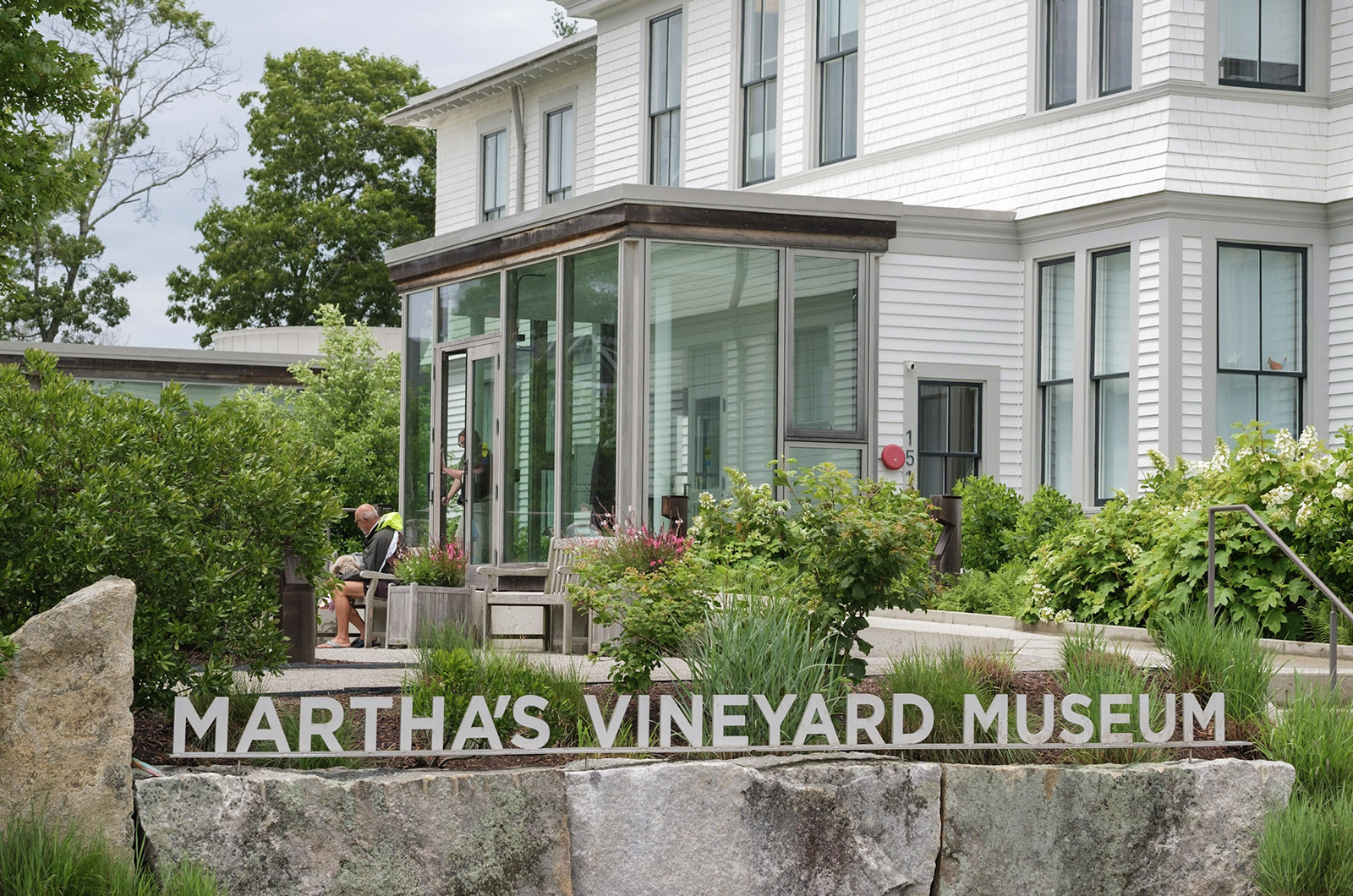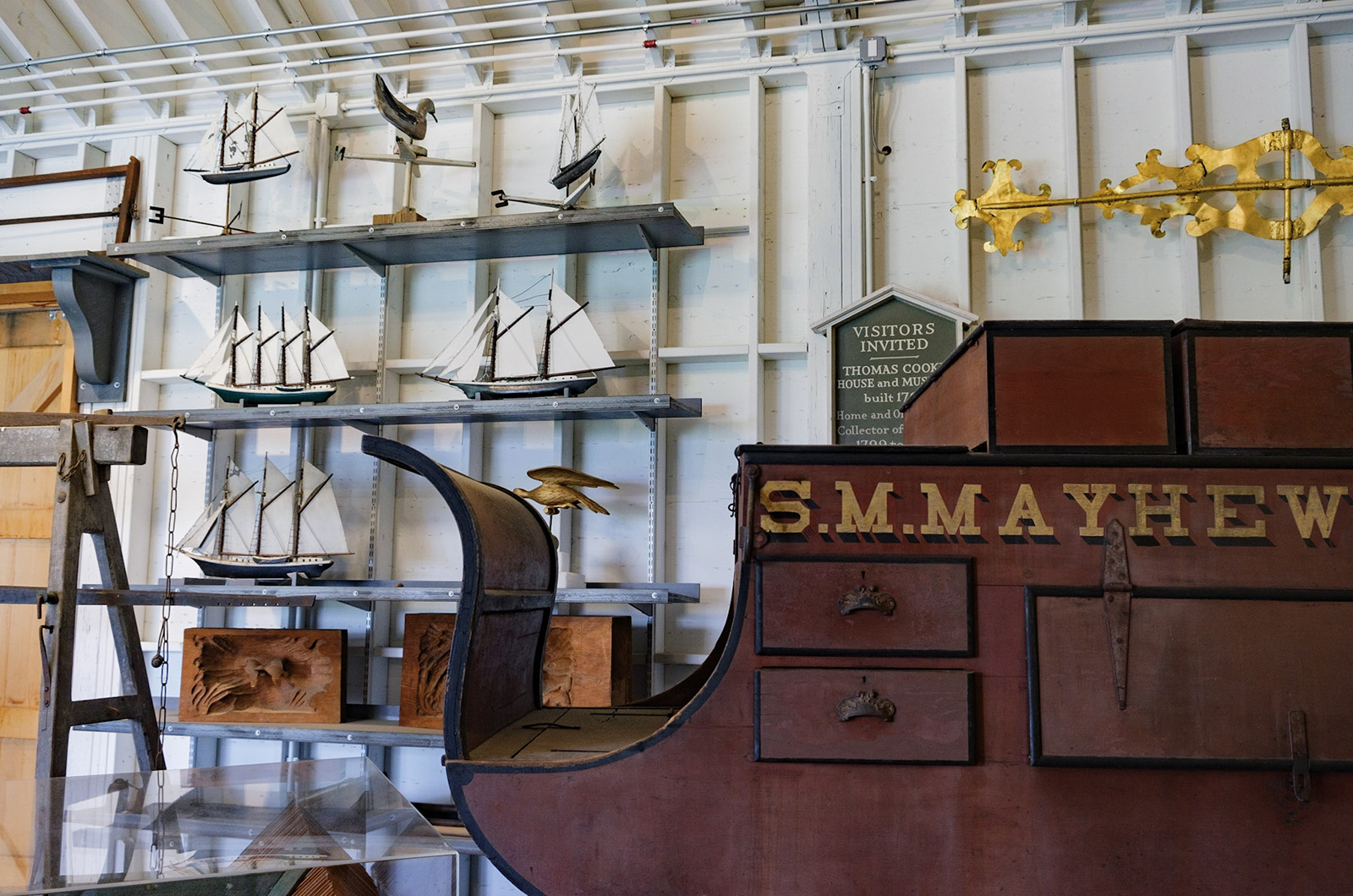Today, the Martha’s Vineyard Museum sits on a hilltop overlooking the Vineyard Haven harbor. Inside, artifacts of Vineyard history dot the walls, from a stuffed heath hen to shipwreck salvage to a sparkling, monumental lighthouse lens.
Temporary exhibits, too, rotate in the museum’s galleries, with one exploring the life of Island writer Dorothy West, and another on the historic wooden boatbuilding industry.
Its humble beginnings, however, stretch back a century, to when a group of librarians and amateur Yankee historians gathered to create the Dukes County Historical Society. They had joined “for the purpose of collecting, preserving and occasionally publishing historical and analogous matter relating to the County of Dukes County.”

This summer the museum pays tribute to that journey, from a sporadically-published periodical to a beacon on the hill. On July 12, the community is invited to take part in the 100-year anniversary celebration at a gathering on the museum grounds.
In the early days, there was no building nor any employees, only a stubborn sense that the Island had a history worth telling. Over the years the museum has changed its name twice, moved its location and expanded its mission considerably, all the while maintaining its initial purpose.
“If you don’t know your own story, you don’t have a soul,” said former museum director Matthew Stackpole. “And how do you know your own story? Because organizations like the museum collect that whole spectrum of ingredients that make up the story of a community.”
When the historical society was first formed, its focus was rather narrow, said Bowdoin Van Riper, the museum’s research historian. Its aim was to collect and preserve local historical artifacts and ephemera.
“The idea was that the Island had all this history, and it’s stored randomly in people’s attics,” he said.
The society “almost immediately began acquiring stuff, just about everything you could think of...which put them in a fix, because then you had to find someplace to store it,” Mr. Van Riper continued.
A solution, or at least part of one, came in 1930, when Ethelinda Mayhew bequeathed her one-third share in the 18th-century Thomas Cooke House in Edgartown. After putting together funds to buy the rest, the society had a historic building to store its historic items. The Cooke house was synonymous with the society for decades after, and the museum still owns the house today.
Over the course of the 20th century, the society tiptoed toward becoming a more public institution, putting on occasional exhibitions and establishing a historic library. In 1952, it acquired the Gay Head Lighthouse’s old Fresnel lens from the Coast Guard. It is still a cornerstone of the collection.
Even as it expanded its footprint, buying and building up its Edgartown campus, the society’s scope was still limited, with a focus on old-school, New England maritime history. whaling, the Civil and Revolutionary wars and genealogy taking center stage.
They paid little attention, said the museum’s current executive director Heather Seger, to the Wampanoag, Black and Portuguese communities on-Island.
The 1980s, said Mr. Van Riper, were a major turning point for the museum, as new volunteers and some of its first-ever paid employees brought a new approach to gathering and communicating history.
Longtime Island oral historian Linsey Lee first got involved with the museum in 1982, when she assisted artist Stan Murphy in putting together a maritime history exhibit.
“You’d go down into the basement of the Cooke house and it was just treasures, hidden treasures,” she said of the collection.
More inspiring than the collection, however, was her experience working at Everett Poole’s Menemsha fish market, hearing the stories of old-time Vineyard fishermen. When she returned to work at the museum in the ‘90s, she made it her mission to collect those oral histories by interviewing not just fishermen, but the whole spectrum of Islanders.
“She was a major impetus in broadening the focus,” said Mr. Van Riper.
Ms. Lee’s interviews became the basis of her Vineyard Voices book series, published by the museum, as well as numerous exhibits over the years.
That era also came to be associated with Arthur Railton, a retired journalist who took up the mantle as volunteer editor of the organization’s journal, the Dukes County Intelligencer.
“He was extremely skilled at identifying interesting stories about interesting people,” Mr. Van Riper said.
Mr. Railton stayed at the helm of the Intelligencer for nearly 30 years.
But as the museum gained momentum towards the end of the 20th century, it began to bump up against the limitations of its physical space once again. The organization added to its Edgartown campus in 1989, but quickly outgrew that space.
“When we grew, more things, more donations came in,” said Mr. Stackpole, who was the executive director of the museum from 2000 to 2008. “So you get to a point where your success is your biggest problem. What are we going to do with all this stuff?”
When its future director Ms. Seger first visited the Edgartown location in 2008, she was acutely aware of those limitations.
“It was a really small place with a lot of kind of small, awkward spaces, but you could tell they were trying to do something interesting,” she said. “It wasn’t your typical New England historical society.”
Efforts to find a new home for the museum came in fits and starts. In 2002, a plot was purchased in West Tisbury, and later the organization unveiled a $25 to $35 million plan to build there, however fundraising for it faltered.
In 2011, the old Marine Hospital in Vineyard Haven came on the market for $3.19 million, and the museum put together funding to purchase the building at a discount. Soon after, it set to work renovating the 1895 structure.
All told, it took eight years and $31 million to renovate and restore the historic building. The museum reopened its doors in 2019.

“It started as a physical expansion, and maybe with all physical expansions come sort of a philosophical transformation,” said Ms. Seger, who started as development director in 2018, before taking over from Phil Wallis as interim director in 2020. She officially took up the director role in 2021.
“There was a tremendous amount of energy and buzz and momentum that was palpable about the staff,” she said.
That momentum was halted, however, on the one-year anniversary of the new location, when the museum had to be closed due to Covid.
“It was like, how do you run a museum if you can’t welcome people into your building?” Ms. Seger recalled. “It unleashed a creativity that even I hadn’t seen in our staff.”
During that year of closure, the museum mounted an “inside-out” museum, creating exhibits that could be viewed from the building’s windows.
The pandemic also impelled the museum to engage more with social media, posting pieces of their collection that didn’t fit in previous exhibits, allowing the organization to reach out even more broadly to communities on-Island.
“We had all these gaps in our collection... the African-American community, the Portuguese community and Cape Verdean Community, the Jewish community,” she said. “Social media allowed us to start saying ‘We do care about this stuff. We just don’t have enough of it yet.’ So, our collection is slowly diversifying.”
The museum’s collection continues to grow, as it has since its very first days.
“I think the museum is still growing into itself,” Ms. Seger said. “We’re celebrating the progress that we’ve made over the last 100 years. But also spending time looking forward... This museum is about strengthening the fabric of our community. And we can only do that if we’re bringing people from different communities across the Island together.”
The Martha’s Vineyard Museum hosts its 100-year anniversary celebration on July 12 from 3 to 5 p.m. Its annual fundraising event, Evening of Discovery, on July 1 is sold out.








Comments (2)
Comments
Comment policy »